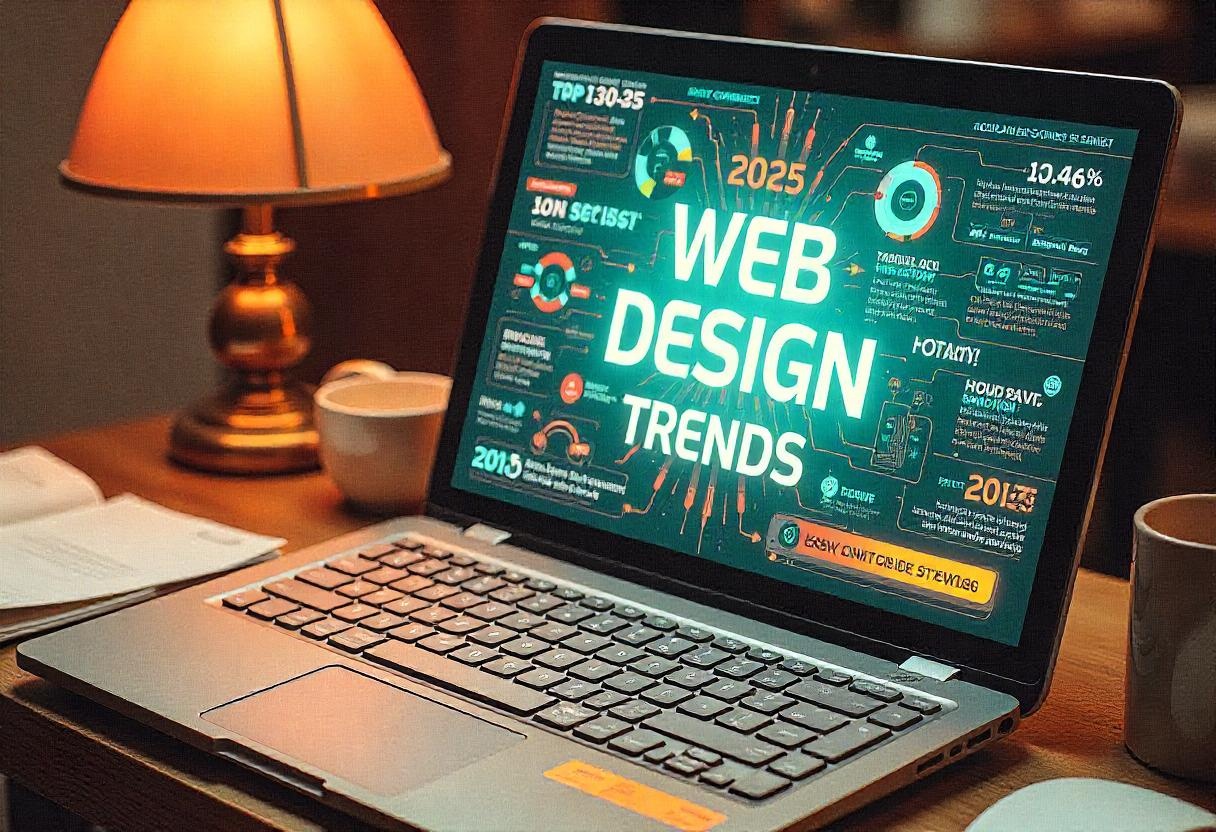Top 10 Web Design Trends in 2025 That Will Dominate the Digital Landscape
Introduction
Web design in 2025 is no longer just about being visually appealing. It’s about creating experiences—immersive, intelligent, accessible, and interactive. With evolving user expectations and cutting-edge technology, websites need to deliver value quickly and intuitively.
This year, the digital landscape is being redefined by 10 powerful design trends that combine aesthetics with functionality. Whether you're a business owner, designer, or developer, these trends will help you design sites that convert better, rank higher, and keep users coming back.

1. Immersive Scrolling Experiences
Scrolling has evolved into a dynamic storytelling tool. Websites now use parallax effects, scroll-triggered animations, and horizontal movements to guide users through an interactive narrative.
These immersive techniques increase time on page, reduce bounce rates, and offer a more engaging experience—especially for landing pages, product reveals, and portfolios.
2. AI-Enhanced Personalization
Personalization is no longer about just showing the user’s name. In 2025, AI helps websites deliver context-aware layouts, tailored content blocks, and product recommendations based on behavioral patterns.
AI integration improves not just UX, but also boosts conversion rates by reducing friction and making every visit feel relevant.
3. Advanced Micro-Interactions
Micro-interactions are subtle animations or responses that guide users: hover states, button clicks, toggle transitions. This year, they're becoming more sophisticated—context-aware and gesture-driven.
Effective micro-interactions enhance intuitiveness, confirm user actions, and elevate the overall polish of a design.
4. Voice-Activated Interfaces
As voice search and smart assistants dominate daily habits, voice interaction is stepping into web design. Voice-enabled search bars, AI chatbots, and navigation tools are increasing in adoption.
Integrating Web Speech APIs ensures better accessibility, faster interactions, and a competitive edge for mobile-first platforms.
5. Glassmorphism & Neo-Brutalism
This year, design extremes are clashing creatively. Glassmorphism, with its translucent panels, blur effects, and depth layering, offers a smooth, modern UI. Meanwhile, Neo-Brutalism embraces rough grids, bold text, and unstyled elements.
Designers are now combining these styles for visual impact and brand distinction.

6. Smart Dark/Light Modes
Dark mode is now a user expectation, but smart switching is the trend. Websites detect system preferences or time-based settings and automatically shift between modes, ensuring a seamless experience across all times of day.
Added benefit: energy saving, especially on OLED devices.
7. Motion UI & Kinetic Typography
Animation isn't just for illustrations anymore—text is moving. Kinetic typography allows headings and copy to respond to scrolls, hovers, or time, creating emotion and brand energy.
Subtle transitions and well-timed animations make content more memorable—just don't overdo it.
8. Minimalist Navigation
With rising mobile usage and shorter attention spans, navigation has become lighter and faster. Expect to see floating nav buttons, sticky icons, and menus that reveal progressively (progressive disclosure).
Less is more—especially when it reduces friction and keeps users focused.
9. Responsive 3D Design
Thanks to WebGL and performance-optimized JavaScript libraries, websites are integrating lightweight 3D components that run smoothly across devices.
From product visualizations to interactive storytelling, 3D elements now enhance UX without slowing down load times.
10. Accessibility-First Design
2025 is the year accessibility is baked into every project, not bolted on. Keyboard navigation, screen reader optimization, color contrast standards, and cognitive clarity are baseline features, not extras.
Designing for accessibility also means improved SEO, user trust, and legal compliance.
Final Thoughts
Malaysia Web Design Trends in 2025 is a blend of emotion, interaction, intelligence, and inclusiveness. From AI-driven layouts to motion-enhanced storytelling, these trends mark the shift toward human-centered, tech-enabled experiences.
If you're building or revamping a website this year, let these trends inspire smarter, more strategic design decisions. The result? Better engagement, better SEO, and a more loyal user base.


